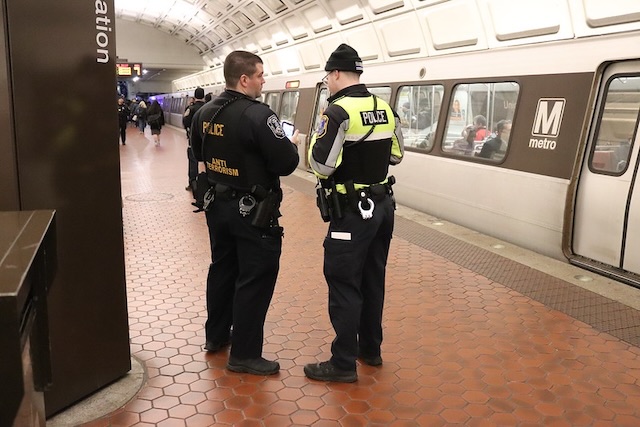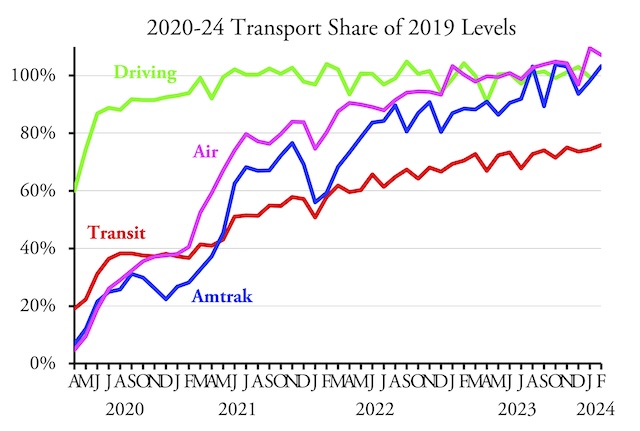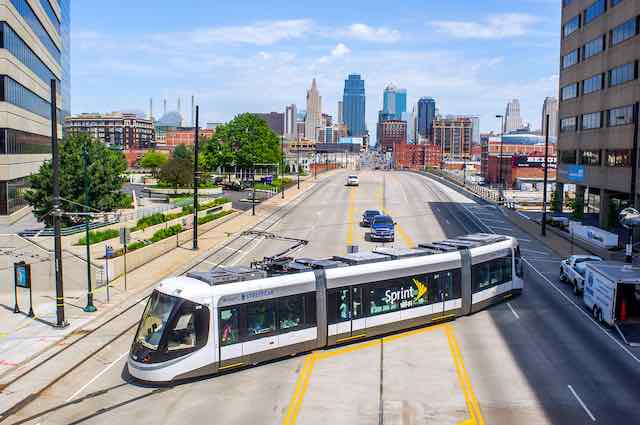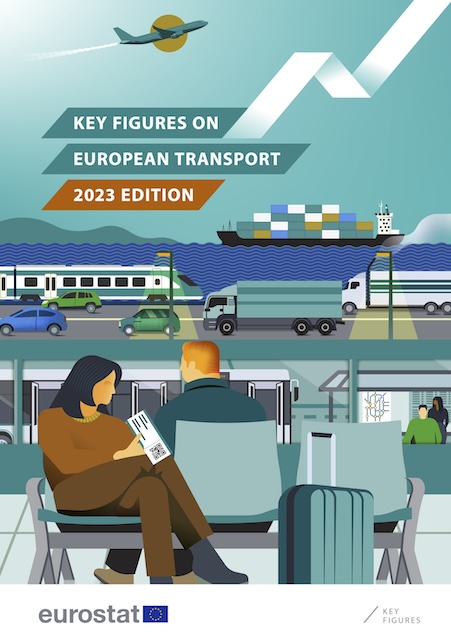My trip through the Owyhee River Canyon went very well, thank you, except for a flat tire on my return home. The transit industry seems to be suffering from a perpetual flat tire, as it carried only 75.6 percent as many riders in March of 2024 as it did in the same month in 2019, according to data posted last week by the Federal Transit Administration. That’s down slightly from 76.0 percent of daily riders in February (adjusting for leap day and correcting for data missing in February’s report). March had the same number of business days in 2024 as in 2019 so no adjustment is necessary there.
The Federal Highway Administration has not yet posted March highway data, but I’ll post an update here as soon as it does.
A handful of major urban areas — Kansas City, Richmond, Oklahoma City, and Tucson — have seen ridership recover to 100 percent of pre-pandemic levels, but this is often because they have eliminated transit fares. From an economic viewpoint, you can’t say there is a significant demand for your service if you have to give it away for large numbers of people to use it. Continue reading


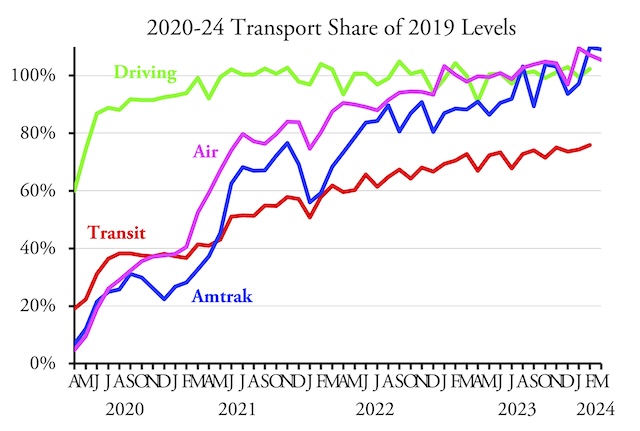
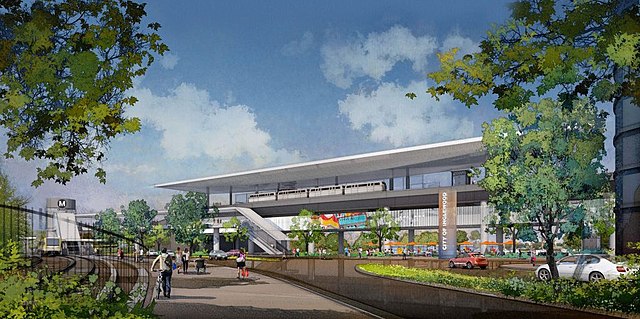
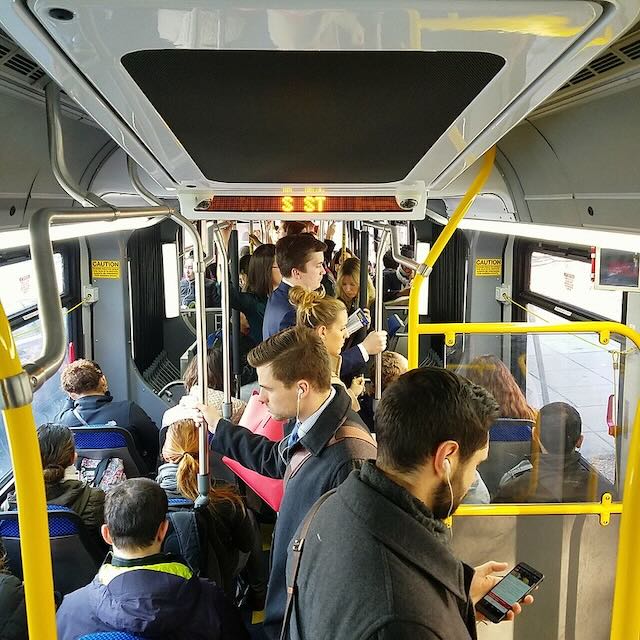 Americans are 25 times more likely to commute by auto than by transit, but an image search for “commute to work” turns up mostly photos of transit riders.
Americans are 25 times more likely to commute by auto than by transit, but an image search for “commute to work” turns up mostly photos of transit riders. 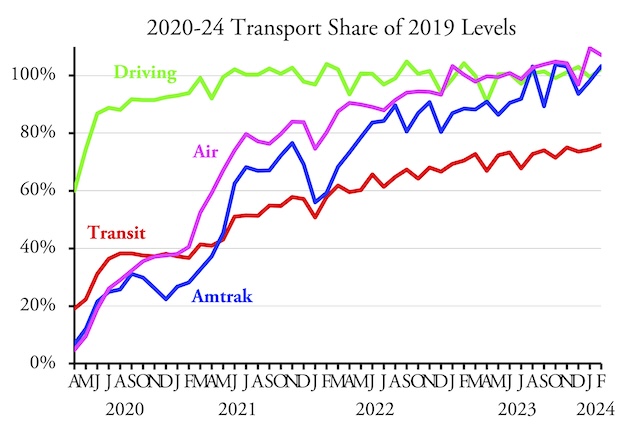 The February 2024 line for driving is obscured by the line for Amtrak, but both are approximately 102 percent.
The February 2024 line for driving is obscured by the line for Amtrak, but both are approximately 102 percent.